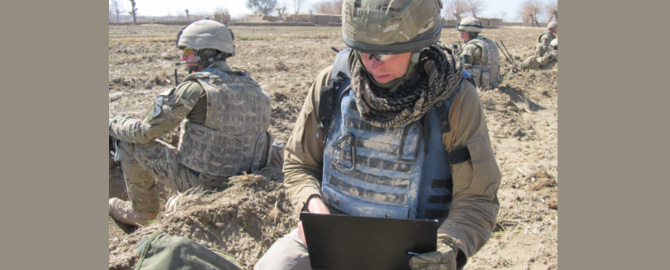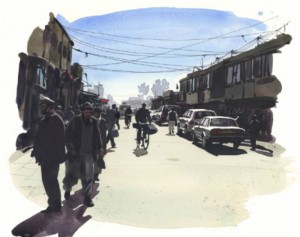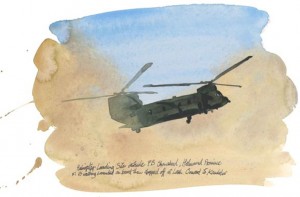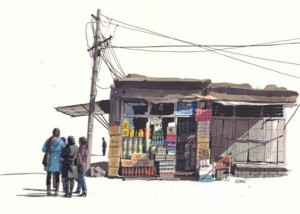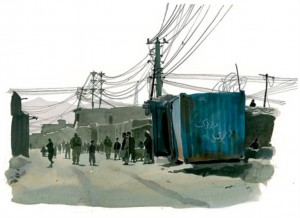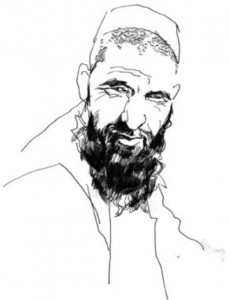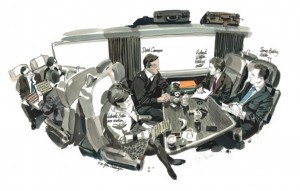Recently, I was fortunate enough to stumble across Matthew Cook’s work. Cook regularly works as a visual journalist, creating art in war-torn areas such as Afghanistan and Iraq. He works alongside the army, drawing and capturing moments in time. The images that he captures are emotional, poignant and moving. They have a rawness to them that cannot be captured by film or photography. Cook is someone who deliberately puts himself into intimidating and unreceptive environments and situations in order to convey the importance of issues. These events are currently going on right now, whether we are having a beer or laying comfortably in our beds, these areas continue to exist torn apart by wartime atrocities.
In a world that is driven by social media and technology there’s a comfort in the fact that there’s still a requirement for Art in its pure sense. Cook’s work challenges us to evoke emotions of empathy in contrast to the detached observer through a lens.
In April 2013, Matthew Cook won Silver for the Editorial Award in the British Illustration’ publication, for his drawing (below) of the Election 2010 Interview of David Cameron. Cook has worked extensively for The British Army, The Times and The Royal Mail.
In his own words
What motivated you to become an Artist? When did you realise you would pursue a life in Art?
I have been drawing and sketching with my father since I was about 5 years old. I took my Art O & A Levels a year early, which took me to Art School. I never remember taking an active decision, it was just the route that felt right for me.
How did you move into the world of visual journalism?
When I graduated from Art School, I spent 4 years as an expedition artist with Operation Raleigh. This took me travelling from New Zealand, Papua New Guinea, Australia and Brazil drawing in some very hostile environments (climate and insects) and was my first trip in to visual journalism. When I returned to London, some of my first jobs were for The Times Newspaper where I covered General Elections, Travel and the Iraq war. Once again, it was a natural route for me and I was lucky to be given jobs where I travelled and drew.
Thinking of Henry Moore’s work as an official War Artist, and your own work of when you’re situated in war and zones of conflict, what do you think an artists work captures that film footage or a photograph doesn’t? Do you feel that there is a substantial difference between the two, especially in a world that is run by Social Media?
War art has many forms, usually as a voice for anti-war. I try to just observe and see it from the ground level. Photographers will often seek the classic action shots, but drawing can capture some of the waiting, patrolling and boredom that goes with war.
In a world where we are bombarded with photos, drawings bring a different pace and I like to think observers take a little longer to look at them. I think photos and drawings go hand in hand and there is space for both in the world of reportage.
What is one of the most memorable experiences you’ve had? Happy or sad, and why.
Being sent to draw the Iraq war in 2003 for The Times was a job of a lifetime for me.
It was 2 months of daily adventures and challenges with each day being unpredictable and surprising. I sent each day’s drawings back by scanning them and sending them by satellite phone all plugged in to the lighter socket of my hire car. I think it’s the first time drawings have been sent back daily from a war. Every job since has seemed a little mundane in comparison.
What elements do you find most challenging in your work?
I find every drawing a challenge. I don’t think I have ever had a straightforward job, it’s always a challenge to find references, meet impractical deadlines and fit images to a brief. Just as well that I like a challenge.
What would you say are the pitfalls and, more importantly, the benefits of working in the way that you do, and why?
I can’t think of any pitfalls. Sometimes I have to pinch myself that I’m being paid to travel and draw. It’s what I would do if I wasn’t being paid.
Is there something you are currently working on, or are excited about starting that you can tell us about?
I’m returning to Helmand in Afghanistan in several weeks, and I can’t wait.
One of the many fine illustrators to emerge from Kingston School of Art (now Kingston University) Matthew Cook has established himself with his very signature style as one of the busiest illustrators of his generation.
Excelling in reportage work, he is never more at home than when out in the field with sketchbook and camera.
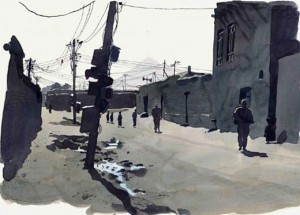 All images courtesy of Matthew Cook | www.matthewcookwarartist.com | www.matthewcookillustrator.co.uk
All images courtesy of Matthew Cook | www.matthewcookwarartist.com | www.matthewcookillustrator.co.uk
For more information on Hong Kong Art Tutoring please contact:
Gail Deayton
Telephone: +852 9722 8353
Email: gd@gaildeayton.com

